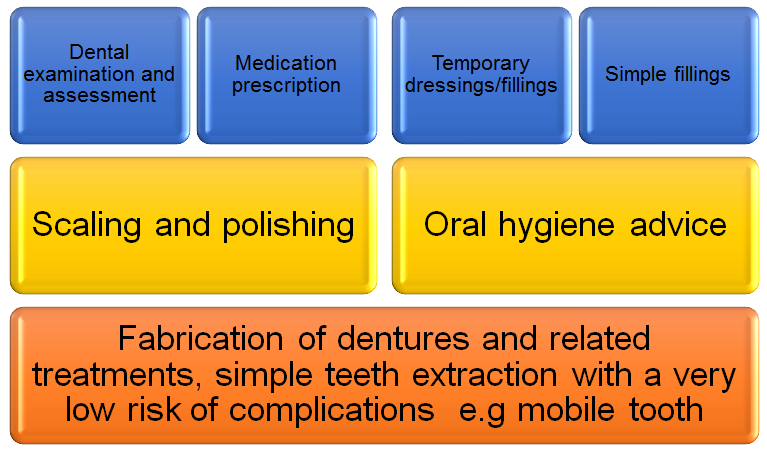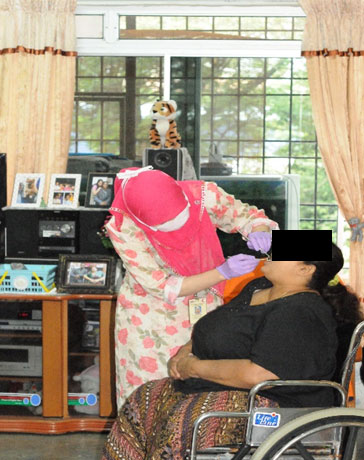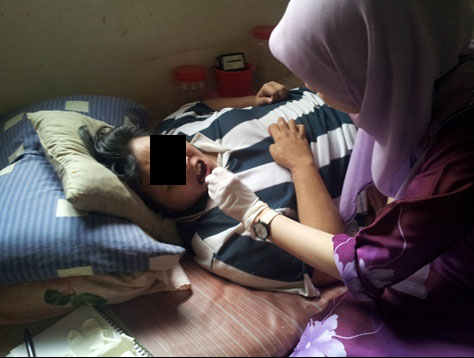Introduction
Many people are unaware that a few of the dental treatment can be done at home without the need to go to the dental clinic. Some of the questions that may arise are: how would it be done, what types of treatment are available and who is eligible for it? Before addressing all these questions, it should be noted that there are some limitations to access such treatment. This service is not widely available to everyone and can only be provided in certain areas due to cost, equipment and manpower constraint. Therefore, the service is limited to those people who are really in need. In addition, it is necessary to screen their overall health condition and the needs for dental treatment to see if they are suitable for the service. In United Kingdom, Australia and New Zealand, home dental visit is also known as domiciliary dental service and has been established for many years. Domiciliary dental service is defined as a “service that reaches out to care for those people who cannot reach a service themselves” (Fiske & Lewis, 2000). Domiciliary dental service is an excellent alternative dental service for such patients who require it. The service is mainly provided by community dentists and hospital dental service (Thompson, 2006).
Why do people need dental treatment at home?

Some people are unable to access normal dental clinic setting due to several reasons (see boxes below). Dental home visit has a non-traditional set-up for dental care indicated for these target groups of patients.
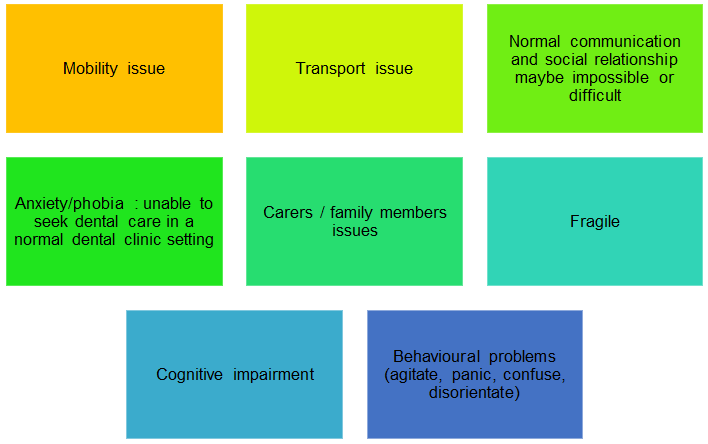
*Adapted from: Fiske & Lewis, 1999 and Fiske & Lewis, 2000
Who are eligible?
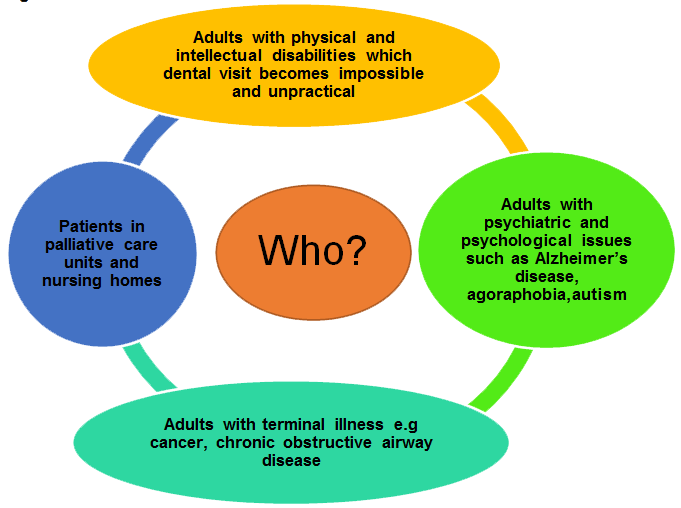
*Adapted from: Fiske & Lewis, 1999 and Fiske & Lewis, 2000
How is it going to be done?
-
Find out if the home dental visit service is available in your area
-
People who want to access the service must be referred by a doctor, dentist or specialist.
-
Once the referral is obtained, the patient/carer/family member will be contacted to arrange for a suitable time and date.
-
Parking facility with easy access for mobile equipment, access to water and electricity, a clean environment and enclosed room for privacy should be discussed.
-
An initial visit will be conducted and the patient will be assessed for their medical problems and treatment needs as well as their ability to cope with the treatment.
-
Patient/Carers/family members must be able to provide medical history, records and medication lists of the patient.
-
The mode of payment has to be discussed unless if patient is eligible for free dental treatment (for example: Person with disability Malaysian card holder or government guarantee letter). However, payment is required for any prosthesis including denture fabrication.
- The dental team must show their staff identity card during all visits.
- The carer and patient must be informed of the risks of doing the treatment away from the surgery and ensuring everyone safety at the same time.
- Written consent for any procedures has to be taken from the patient or someone legal for consent on behalf of the patient.
- Follow-up dental care as necessary.
Type of possible dental treatment?
The type of treatment that can be carried out are limited and depend on the dental equipment available, the experience of the dentist in charge, the degree of treatment difficulties, the patient’s medical conditions as well as the safety condition in the home to be visited. Nevertheless, some of the dental treatments listed below are possible to be provided during the home dental visit:
|
Fig 1: Hand scaling and polishing for patient with physical disability |
Fig 2: Dental examination for patient with physical and medical issues |
References
- FISKE, J. & LEWIS, D. 2000. The Development of Standards for Domicilliary Dental Care Services: Guidelines and Recommendations. Gerodontology, 17, 110-122.
- THOMPSON, S. 2006. Guidelines for the delivery of a domiciliary oral health care service. Journal of Disability and Oral Health 7, 166-172.
- FISKE, J. & LEWIS, D. 1999. Domicillary dental care. Dent Update, 26:396-404.
| Last Reviewed | : | 28 September 2016 |
| Writer | : | Dr. Siti Zaleha bt. Hamzah |
| Accreditor | : | Dr. Norjehan bt. Yahaya |


